Story at a glance:
- A Temple University building engages students and the public in smart new ways.
- Finished in August 2019, the four-story library project has a large green roof and expansive atrium lobby.
- Architects were able to bring in natural light to 90% of the occupied areas, reducing the amount of artificial light required.

Photo by Michael Grimm
Temple University’s sustainable campus update isn’t just green; it’s also incredibly eye-catching, thanks to the collaborative effort of Stantec and Snøhetta, who designed the new Charles Library.
Finished in August 2019, the four-story, 220,000-square-foot green library project is complete with an impressive green roof and expansive atrium lobby, all set on a textured granite base.
But the library is more than an attractive backdrop for selfies. It also pushes boundaries with streamlined energy use and a multifunctional layout. Versatility was a priority for Scott Sullivan, principal architect at Stantec. “It’s got the kind of adaptability because of the openness, transparency, and flexibility to not get stuck. This is a building that’s going to have a good, long life.”
LEED Gold certifications were in mind from concept design to construction. Stantec designed the floor slats, fitting them with innovative hydronic piping to push hot or cool water through the floor. Sullivan says the hydronic system represents a good 50% of how the building is heated and cooled, allowing for less ductwork and less fans needed to push air through the building. These new mechanics reduce energy use by around 30% compared to a typical library. You’ll also find water bottle filling stations, bike storage, and recycling areas rounding out the library’s green features.
But you don’t have to register for classes to enjoy the library. Luis Vildostegui, a partner on the project, says the way Temple opened the building to the public and not just university students is extraordinary. “They have a laptop sharing program where you can go in and take out a laptop and find yourself a home in the building to use the Internet, then return the laptop before you leave. That’s heartwarming evidence of how Temple values and sees the library—how they see themselves as a steward and a responsible party in the city and as a member of the community.”
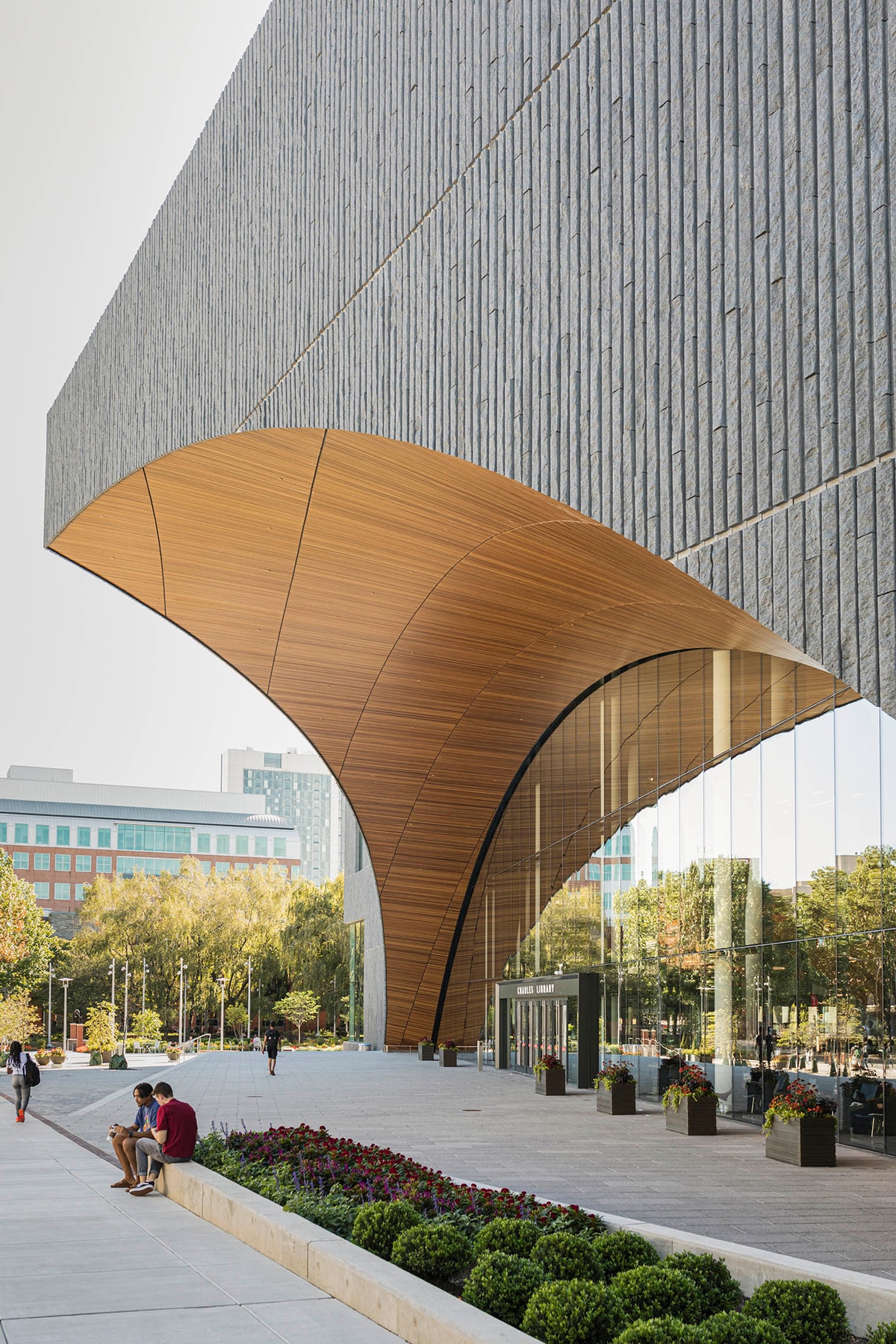
Photo by Michael Grimm
The shimmering granite chosen for the building’s base has bits of quartz that sparkle depending on the weather and time of day. “The stone itself has been described as a corduroy pattern, where the stone is bush hammered on the exterior face. But there are also vertical saw cuts throughout the granite that create the two textures. A very smooth texture connects to that bush hammered rough texture, and that also plays a little bit of tricks with the eye about the lighting level,” Sullivan says.
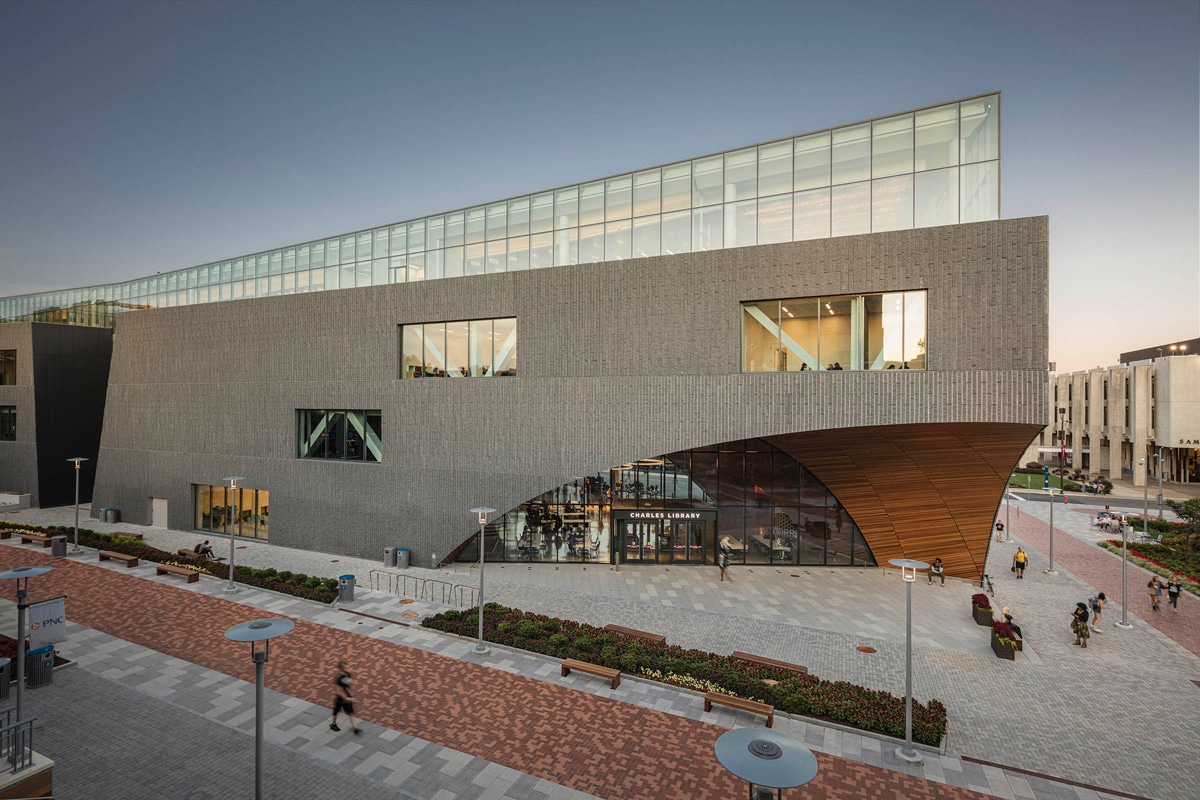
Photo by Michael Grimm
Much of the library’s facade is glass, making for a stunning exterior and reducing energy used. These windows are another example of the integrative design processes between Snøhetta and Stantec.
“Snøhetta was looking for large glazed windows to increase the transparency of looking into the building. The side benefit of that is that we’re bringing in natural light to 90% of the occupied areas, reducing the amount of artificial light required,” Sullivan says. “All of our lighting inside the building has either a combination of photoelectric sensing or occupancy sensing. If it’s a nice sunny day, the lights won’t turn on. If it’s a cloudy day or night, the lights will then turn on based on occupancy or darkness levels.”

Photo by Michael Grimm
The Charles Library green roof—one of the largest in Philadelphia—provides major relief from rain and stormwater, using basins that slowly percolate precipitation into the surrounding groundwater system rather than diverting it to the city’s overburdened water system.
The upper roof is an extensive roof system with 3-inch-deep soil strata, capturing most of the rainwater. Smaller roofs on the fourth floor are visible to students inside. Intensive roof systems have about 10-inch-deep soil strata, allowing for larger flowers and plant life native to the Delaware Valley.
“There were a lot of bees and butterflies that showed up and were pollinating all the flowers,” Sullivan says. Vildostegui adds, “There’s an element of it that is just plain fun and feel-good, especially in a city as urban and as dense as Philadelphia where we have difficulties sustaining bee population and bird population.”
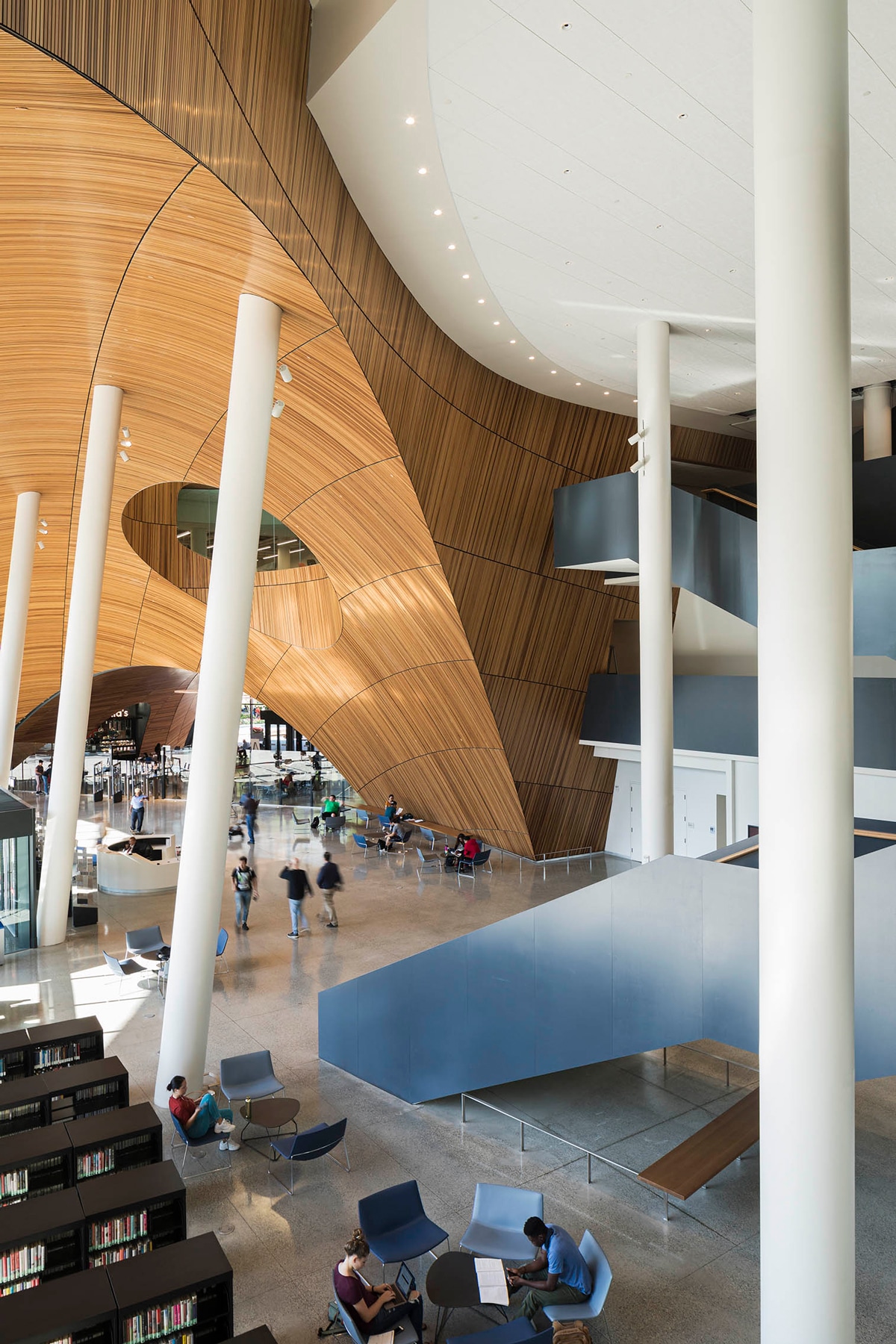
Photo by Michael Grimm
Transparency was key during the design process.
The library’s intuitive floor plan is visible from all three floors of the lobby, so students and visitors can instantly see where they need to go for math tutoring, reading rooms, or other tasks.
Vildostegui says, “You don’t see ducts, air distribution systems, grilles, or a whole lot of vents or louvers. When you have the engineers talking with the designers from day one, you don’t see all of that visual noise. We have all these systems, really high-tech technology, but it’s not burdening the space itself and what the space is
trying to do.”
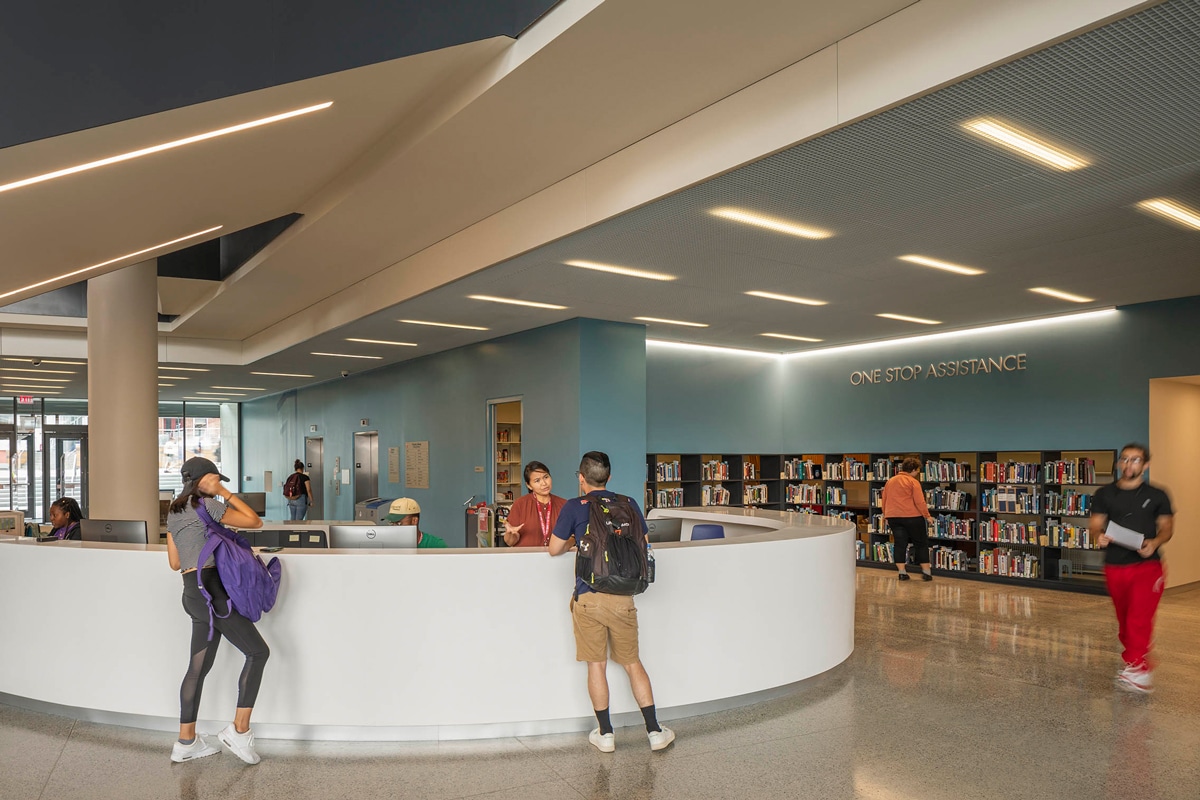
Photo by Michael Grimm
The library’s automated storage and retrieval system is one of its most revolutionary components. Books from the previous library were transferred and are now stored in a sustainable way to be retrieved by an accessible technological system.
“It’s basically a warehouse that has very highly condensed bookshelves that are 11 times more dense than standard, browsable, 6-foot-high bookshelves. Now we only have to heat and cool a 220,000-square-foot building versus a 330,000-square-foot building,” Sullivan says.
From the first weeks of the library’s opening, Temple students were excited to see the Book-Bot in action. “They were all excited to see how the book was delivered from the warehouse racks to the librarian, who would then bring it out to give it to the students.”
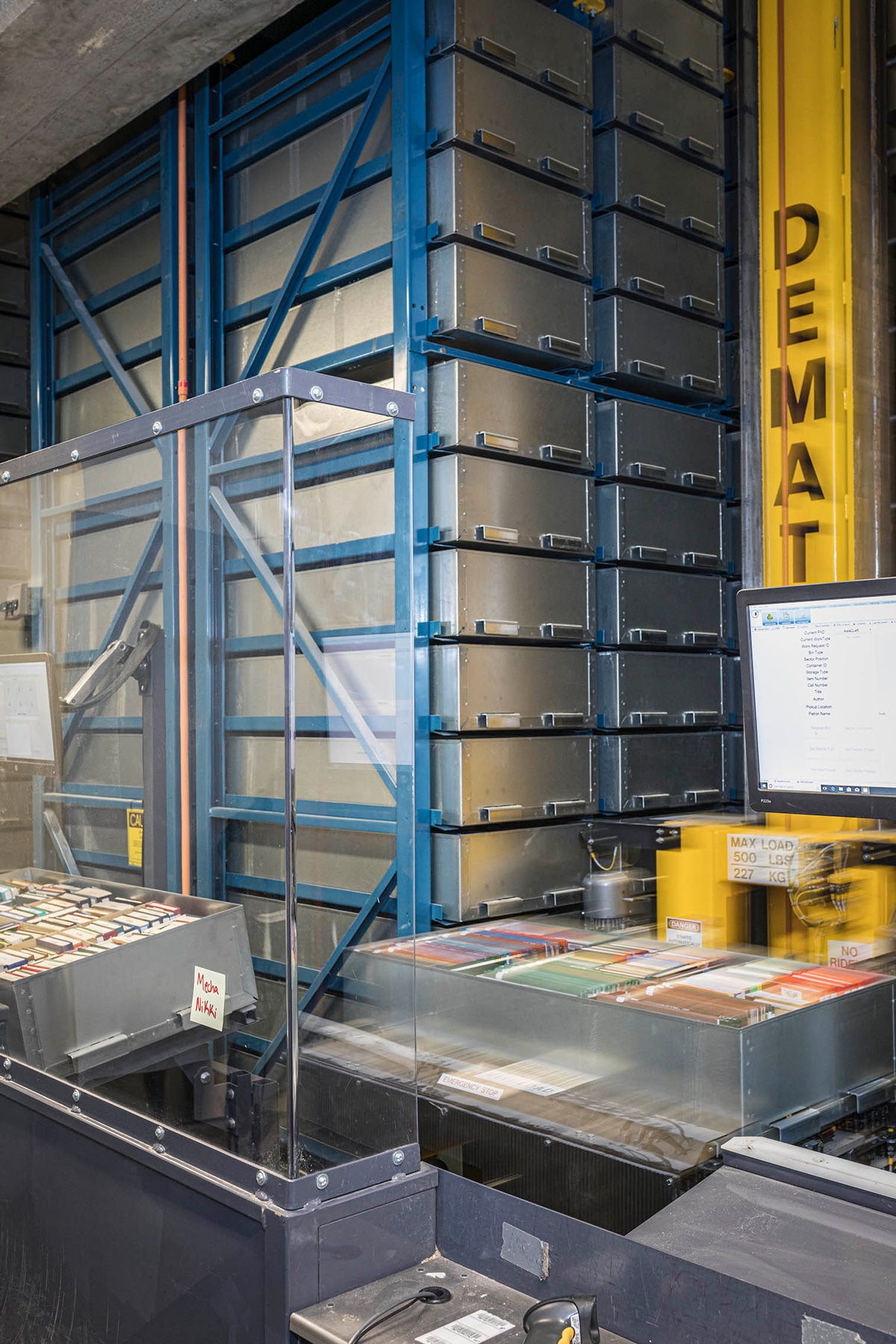
Photo by Michael Grimm
Level 1 floor plan
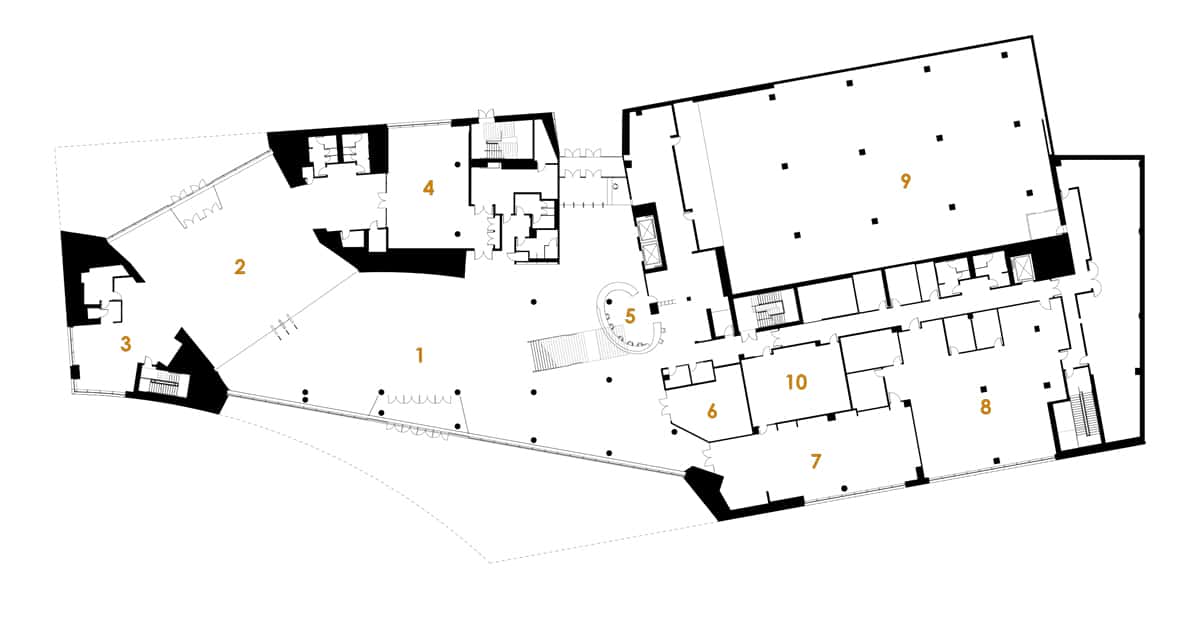
Drawing courtesy of Stantec
Project Credits
Project name: Temple University Charles Library
Location: Philadelphia
Completion: 2019
Size: 220,000 square feet
Architects: Stantec, Snøhetta
Civil Engineer: Hunt Engineering
Structural Engineer: LERA
Contractor: Daniel J. Keating IT / AV: Sexton Group
Facade Consultant: Heintges
Green Roof Consultant: Roofmeadow
Lighting Consultant: Tillotson Lighting Design
Programming Consultant: brightspot strategy


